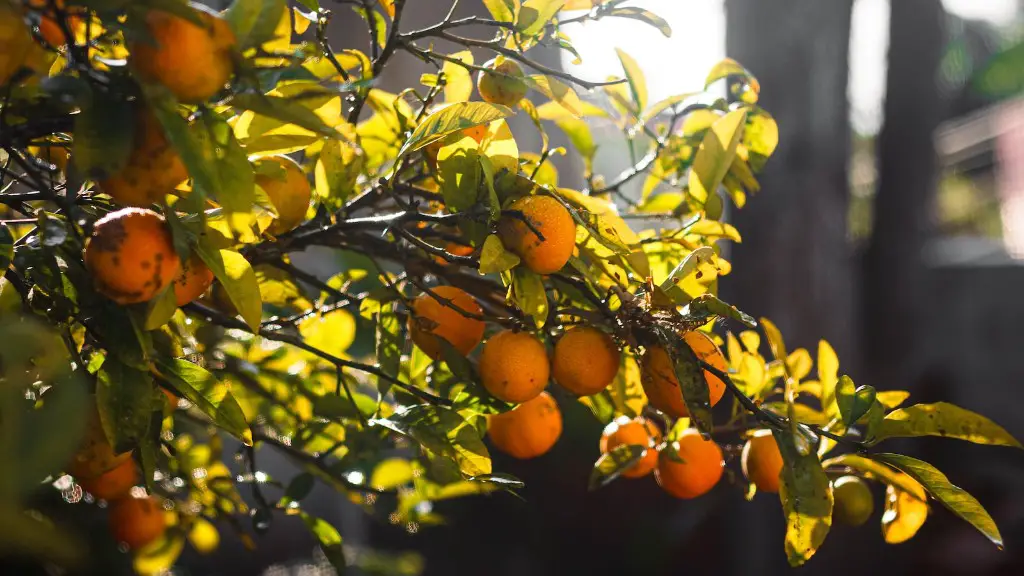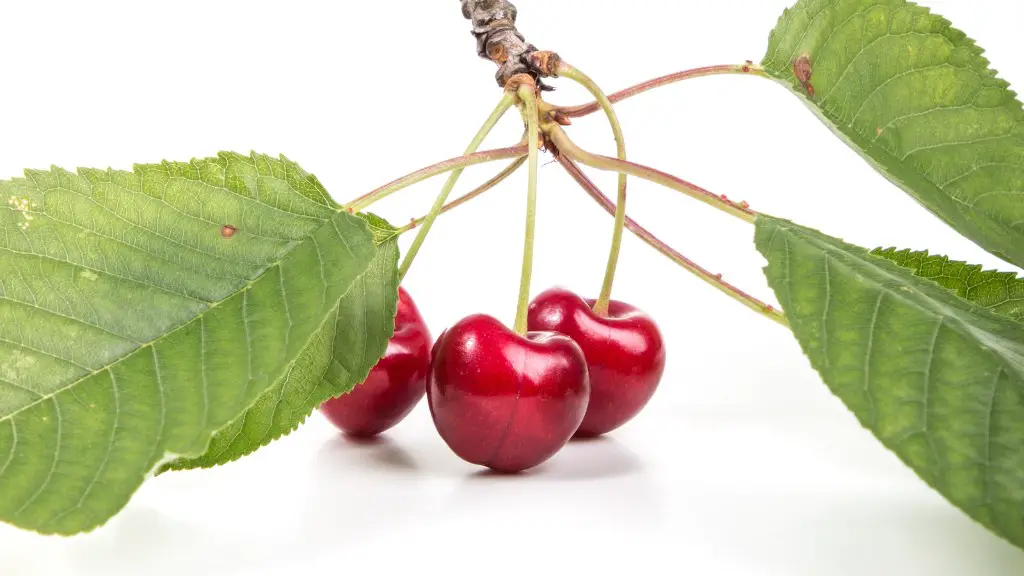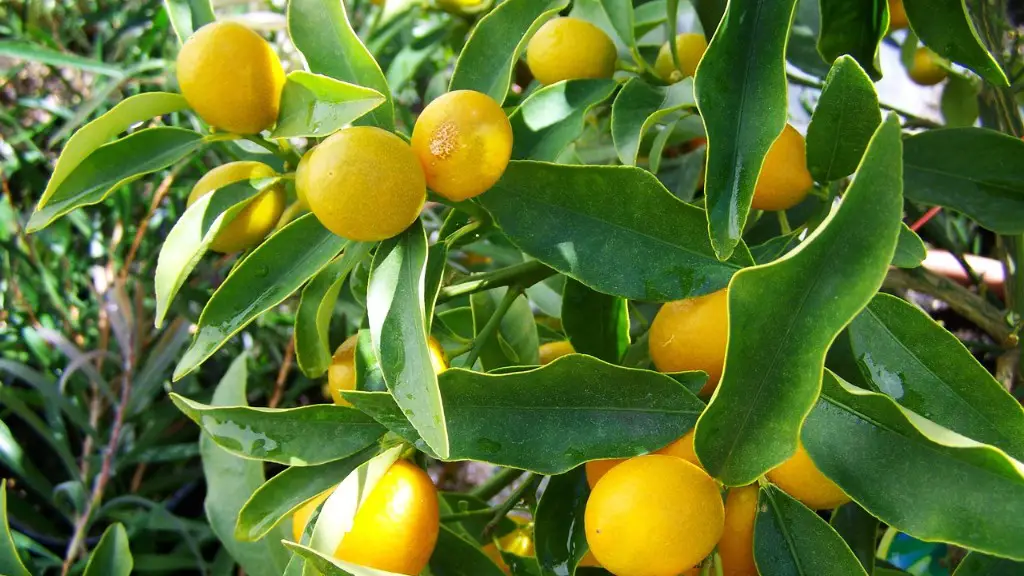When it comes to potted lemon trees, the type of soil you use is essential. It provides the necessary food and nutrition to keep the tree healthy and thriving. A mixture of perlite, compost, and planting soil allows for optimal drainage while providing adequate nutrient levels. By mixing the right amount of each component, you can create a soil blend that will keep your lemon tree happy and productive.
Perlite is a natural lightweight material that is created when volcanic glass is heated. It can increase the aeration of the soil and is also great for insulation. Compost is an ingredient that provides essential nutrients to the soil and helps maintain a healthy balance. It is also abundant in beneficial microorganisms that can be beneficial for the tree. Lastly, planting soil should be around a third of the mixture to ensure that the blend does not become too heavy for the tree’s root system.
When selecting a pot for your lemon tree, it is important to ensure that the roots have enough space to grow and thrive. Lemon trees appreciate soil that slows when it comes to water and nutrient retention. Keeping your potted soil between 2 and 4 water retention is ideal. When adding water, moisture should be spread evenly throughout the soil. Additionally, fertilizers can be added if necessary.
When it comes to potted lemon trees, the right soil is key. By combining perlite, compost, and planting soil in the right proportions, you can create a soil that is perfectly suited to your lemon tree. Taking the time to select the right pot and maintaining a proper soil moisture level helps ensure that your potted lemon tree will thrive and remain healthy.
The Best Containers for Lemon Trees
When growing a potted lemon tree it is important to choose a container that provides enough room for growth. Lemon trees are naturally deep-growing, so large, deep pots are ideal. When selecting a container, you should make sure it is wide enough to hold the roots of the tree. Containers with drainage holes at the base are also key, as they allow excess water to freely flow through the soil, preventing waterlogging.
Outdoor pots tend to be fairly lightweight and easy to move, making them ideal for potted lemon trees. It is important, however, to make sure to protect your lemon tree from the elements and possible wind damage. If you keep your pot on the ground, make sure the soil has a protective layer around it, such as a heavy plastic or metal guard. If you hang your pot, a sturdy hook should be securely fastened to the wall. This will ensure that the pot remains in place during windy and rainy days.
Plastic pots can be a great choice for lemon trees as they are lightweight, cost-effective, and have a long life span. However, they can attract and accumulate heat, which can be detrimental to your tree. Using plastic pots with light colors can help mitigate this effect, as they will absorb less heat. Ceramic pots are also a great choice, and they come in a variety of shapes and sizes. However, they also have the potential to crack when exposed to extreme temperature changes.
Choosing the right container for your lemon tree is essential to its health and resilience. Containers should provide adequate space for growth and should also be large enough to support drainage holes. Additionally, depending on your conditions and needs, you may need to select a pot that offers specific benefits such as a heavier weight for wind protection or certain colors for heat mitigation.
Planting Lemon Trees in Pots
When it comes to planting lemon trees in pots, the key is to provide the tree with an appropriate environment in which to grow. The pot should contain a high-quality soil mix that meets the tree’s needs for nutrition, air, and water. The soil should contain a combination of perlite, compost, and planting soil so that it provides optimal drainage while also providing essential nutrients.
The size of the pot will also play an important role in the success of your lemon tree. Smaller pots may limit the growth of the tree, while larger pots have the potential to hold too much extra soil, compromising the drainage ability. Lemon trees tend to prefer a pot that is between 10 and 15 inches in diameter. This provides adequate room for both the roots and the soil to remain at an optimum level.
Once the soil has been prepared, the next step is to place the tree in the pot. The soil should be packed around the root ball, making sure to not compact it too much. If two or more root balls are present, spread them apart gently and plant them at the same height. The soil should be filled to a few inches from the top of the pot and the tree should be watered immediately.
Some lemon tree owners may choose to add a slow release fertilizer at this point to provide the tree with extra nutrients. There are various types of fertilizer available, and it is important to be sure you select the one that is best suited for your tree. After planting, the pot should be placed in a sunny location, preferably one that receives at least six hours of direct sunlight a day.
Caring for a Potted Lemon Tree
Once planted, potted lemon trees should be given careful attention to ensure their health and resilience. Proper care should include regular watering, pruning, and fertilizer treatments. When watering, it is important to keep the soil moist but not overly saturated. The soil should be allowed to dry slightly between waterings.
When it comes to pruning, lemon trees can be pruned lightly to tidy up the shape or to remove dead or damaged branches. When fertilizing, a balanced fertilizer that is specifically formulated for citrus trees should be used. It is important not to over-fertilize, as this can damage the tree. The amount of fertilizer used should be determined by the size and age of your lemon tree.
It is also important to inspect your lemon tree regularly for signs of pests or diseases. If signs of pest infestations are present, an organic pesticide can be used. For diseases, always make sure to identify the issue before treating it, as many issue can be treated without the use of pesticides or fungicides.
Your lemon tree will also benefit from regular repotting. As your tree grows, the roots may become crowded and rootbound. To prevent this, your lemon tree should be repotted every two to three years. When repotting, use a slightly larger pot than the current one and mix fresh soil into the existing soil.
Common Lemon Tree Problems
As with any houseplant, lemon trees can face various kinds of issues. Common problems include powdery mildew, aphids, and citrus greening. Powdery mildew is a white or greyish fungus that appears on the leaves and stems of your tree. The best way to combat it is by spraying a solution of baking soda and water on the affected areas. Aphids are small, soft-bodied insects that feed off the sap of your trees, causing leaves to yellow and curl. A neem oil solution can be used to combat them. Citrus greening is a disease that is caused by bacteria and can slowly kill your lemon tree. The best way to combat it is to limit the stress on your tree by providing ample light, water, and nutrition.
If your lemon tree is exhibiting signs of distress, it is important to address the issue quickly. Most common problems can be easily treated and do not necessarily require extensive treatment. If left untreated, however, mild issues can quickly become more serious. If you are unsure how to proceed, never hesitate to reach out to a professional for assistance.
Best Practices for Lemon Trees in Pots
There are a few methods and practices that should be implemented in order to ensure that your potted lemon tree remains in top shape. Pruning is one way to keep the tree looking nice while also encouraging growth. Light pruning is best and should only be done when the tree is actively growing. Additionally, lemon trees should be given at least six hours of direct sunlight a day, as it allows them to take in all essential elements and thrive.
Regular fertilizer treatments are also essential for maintaining healthy lemon trees. Doing so replenishes lost nutrients and keeps the tree nourished. Fertilizer should be applied every 2-3 months, depending on the type of soil you are using. Be sure to read the instructions on the package to ensure you are applying the correct amount.
Regular watering is also essential for proper lemon tree care. As mentioned above, the soil should be kept between 2 and 4 water retention. When watering, it is important to spread the moisture evenly throughout the soil. Water logging should be avoided, as this can cause root rot and harm the tree. Standing water should also be avoided, and any excess should be removed.
Lemon trees in pots can provide delicious, juicy lemons for years to come with just a little care and attention. Taking the time to ensure you are using the right soil mixtures, selecting an appropriate pot, and providing regular watering and fertilizing can help your lemon tree survive and thrive. Additionally, addressing any existing problems quickly and diligently will help ensure your tree remains strong and healthy.




